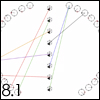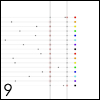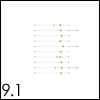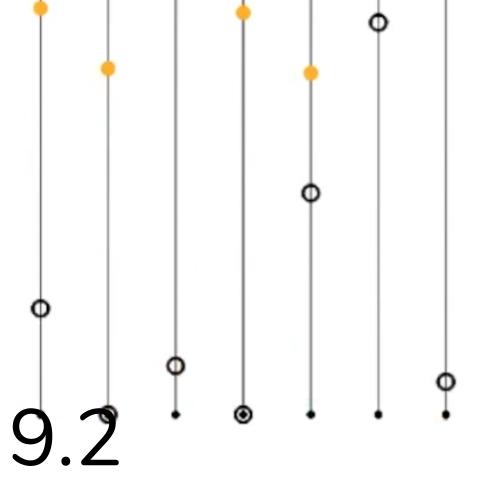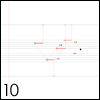Study no. 8 was the first of many experiments in how Animated Notation can be used to explore malleable phase relationships. In this piece, each performer watches a notational aggregate designed to look like a metronome, indicating events based on the location of the attack cursor (more details below). Over the course of the piece, each player's tempo slowly speeds up, sustains, and slows down, independent of one another. As can be seen in the video below, projecting the Animated Score for the performers and the audience is not only a practical solution, but may enhance one's understanding of the rhythmic intentions of the piece.
Performance Instructions
For 15 percussionists.
The score should be projected in view of all player and the audience.
Each player should have 2 unpitched, resonant metals (cans, etc.), 2 pieces of wood (woodblocks or otherwise), and 2 tuned metals (glockenspiel bells, desk bells, etc.)
Each player follows one of the metronomes throughout the piece. Only one player follows each metronome.
Each metronome features an attack cursor swinging back and forth along the top half of the large circle, and 2 event nodes, one on each side. Each time the attack cursor connects with one of the event nodes, the player plays with the corresponding hand, i.e. left side = left hand, right side = right hand.
The event node's color determines instrumentation:
Grey: unpitched metal.
Brown: wood.
Blue: pitched metal.
Dynamics:
Unpitched metals: F/FF.
Wood: MF/F.
Pitched metals: P/MP.
Study no. 8 will always begin with unpitched metal, followed by wood, and end with pitched metals.
Duration: approx. 11 minutes.
Ryan Ross Smith, March 2012.
If you would like a copy of this animated score for performance, or have any questions about the animated notation used in this piece, feel free to get in touch! My contact information can be found here.
